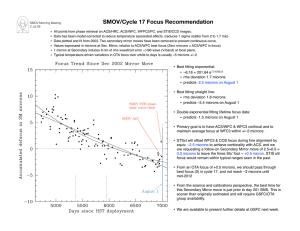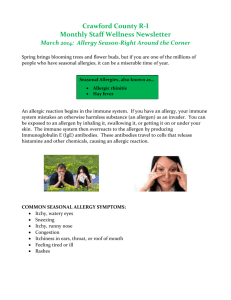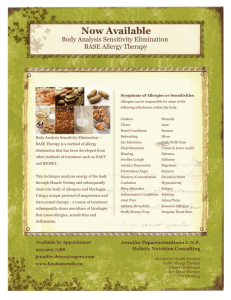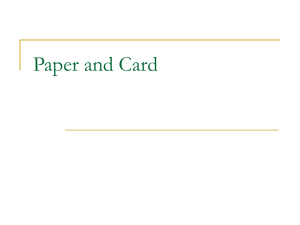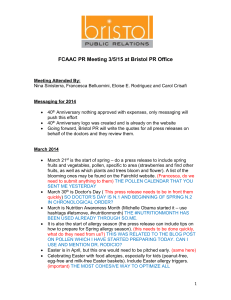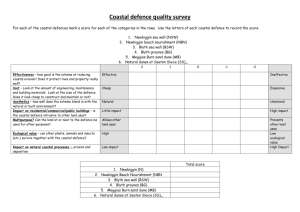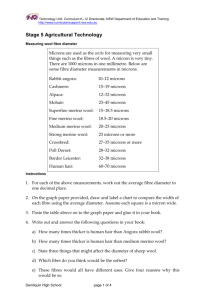Pharmacotherapy of allergy: seasonal and perennial
advertisement
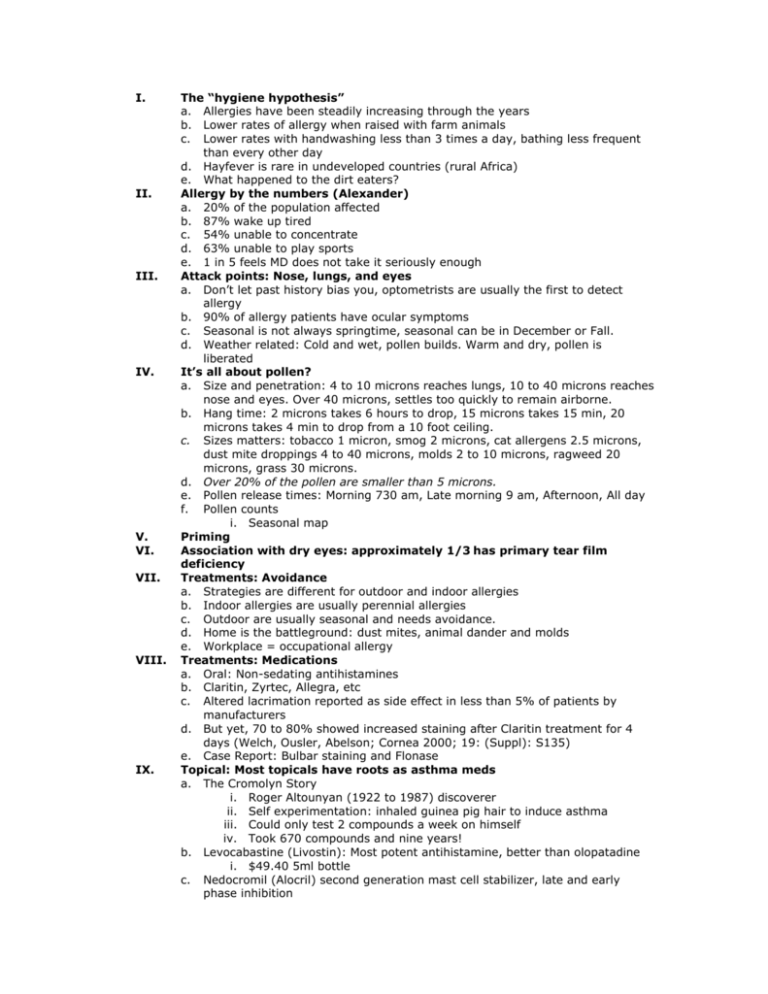
I. II. III. IV. V. VI. VII. VIII. IX. The “hygiene hypothesis” a. Allergies have been steadily increasing through the years b. Lower rates of allergy when raised with farm animals c. Lower rates with handwashing less than 3 times a day, bathing less frequent than every other day d. Hayfever is rare in undeveloped countries (rural Africa) e. What happened to the dirt eaters? Allergy by the numbers (Alexander) a. 20% of the population affected b. 87% wake up tired c. 54% unable to concentrate d. 63% unable to play sports e. 1 in 5 feels MD does not take it seriously enough Attack points: Nose, lungs, and eyes a. Don’t let past history bias you, optometrists are usually the first to detect allergy b. 90% of allergy patients have ocular symptoms c. Seasonal is not always springtime, seasonal can be in December or Fall. d. Weather related: Cold and wet, pollen builds. Warm and dry, pollen is liberated It’s all about pollen? a. Size and penetration: 4 to 10 microns reaches lungs, 10 to 40 microns reaches nose and eyes. Over 40 microns, settles too quickly to remain airborne. b. Hang time: 2 microns takes 6 hours to drop, 15 microns takes 15 min, 20 microns takes 4 min to drop from a 10 foot ceiling. c. Sizes matters: tobacco 1 micron, smog 2 microns, cat allergens 2.5 microns, dust mite droppings 4 to 40 microns, molds 2 to 10 microns, ragweed 20 microns, grass 30 microns. d. Over 20% of the pollen are smaller than 5 microns. e. Pollen release times: Morning 730 am, Late morning 9 am, Afternoon, All day f. Pollen counts i. Seasonal map Priming Association with dry eyes: approximately 1/3 has primary tear film deficiency Treatments: Avoidance a. Strategies are different for outdoor and indoor allergies b. Indoor allergies are usually perennial allergies c. Outdoor are usually seasonal and needs avoidance. d. Home is the battleground: dust mites, animal dander and molds e. Workplace = occupational allergy Treatments: Medications a. Oral: Non-sedating antihistamines b. Claritin, Zyrtec, Allegra, etc c. Altered lacrimation reported as side effect in less than 5% of patients by manufacturers d. But yet, 70 to 80% showed increased staining after Claritin treatment for 4 days (Welch, Ousler, Abelson; Cornea 2000; 19: (Suppl): S135) e. Case Report: Bulbar staining and Flonase Topical: Most topicals have roots as asthma meds a. The Cromolyn Story i. Roger Altounyan (1922 to 1987) discoverer ii. Self experimentation: inhaled guinea pig hair to induce asthma iii. Could only test 2 compounds a week on himself iv. Took 670 compounds and nine years! b. Levocabastine (Livostin): Most potent antihistamine, better than olopatadine i. $49.40 5ml bottle c. Nedocromil (Alocril) second generation mast cell stabilizer, late and early phase inhibition i. $56.91 5ml bottle Olopatadine (Patanol): “Combination” allergy med i. Effective on tryptase/chymase (TC) containing mast cells located in skin and eyes. ii. Tests on human cells, not rodent cells. iii. Poor effectiveness on lungs, nose and small intestines. iv. Sometimes, TID is needed v. Most expensive $58.38 5 ml bottle vi. qD Patenol 1. 0.2% formulation (legacy formulation 0.1%) 2. good for 16 hours e. Ketotifen fumarate (Zaditor) $48.96 5 ml bottle f. Pemirolast (Alamast) mast cell stabilizer g. Azelastine (Optivar) $53.22 6ml bottle h. Emedatine (Emadine) H1 antagonist i. Loteprednol: site specific steroids $38.03 5 ml (Alrex) $27.66 5ml (Lotemax) j. New treatment: Epinastine i. 0.05% BID histamine H1 receptor antagonist mast cell stabilizer ii. Improved itch scores for seasonal allergic conjunctivitis k. Off label use of cyclosporine i. Anti-inflammatory and immunomodulating agent ii. Case Report: Cyclosporine and allergy Nutritional intervention: Butterbur, Perilla 6000, stinging nettle, similium. Allergies and CL a. Case Report: Environmental triggers d. X. XI.

